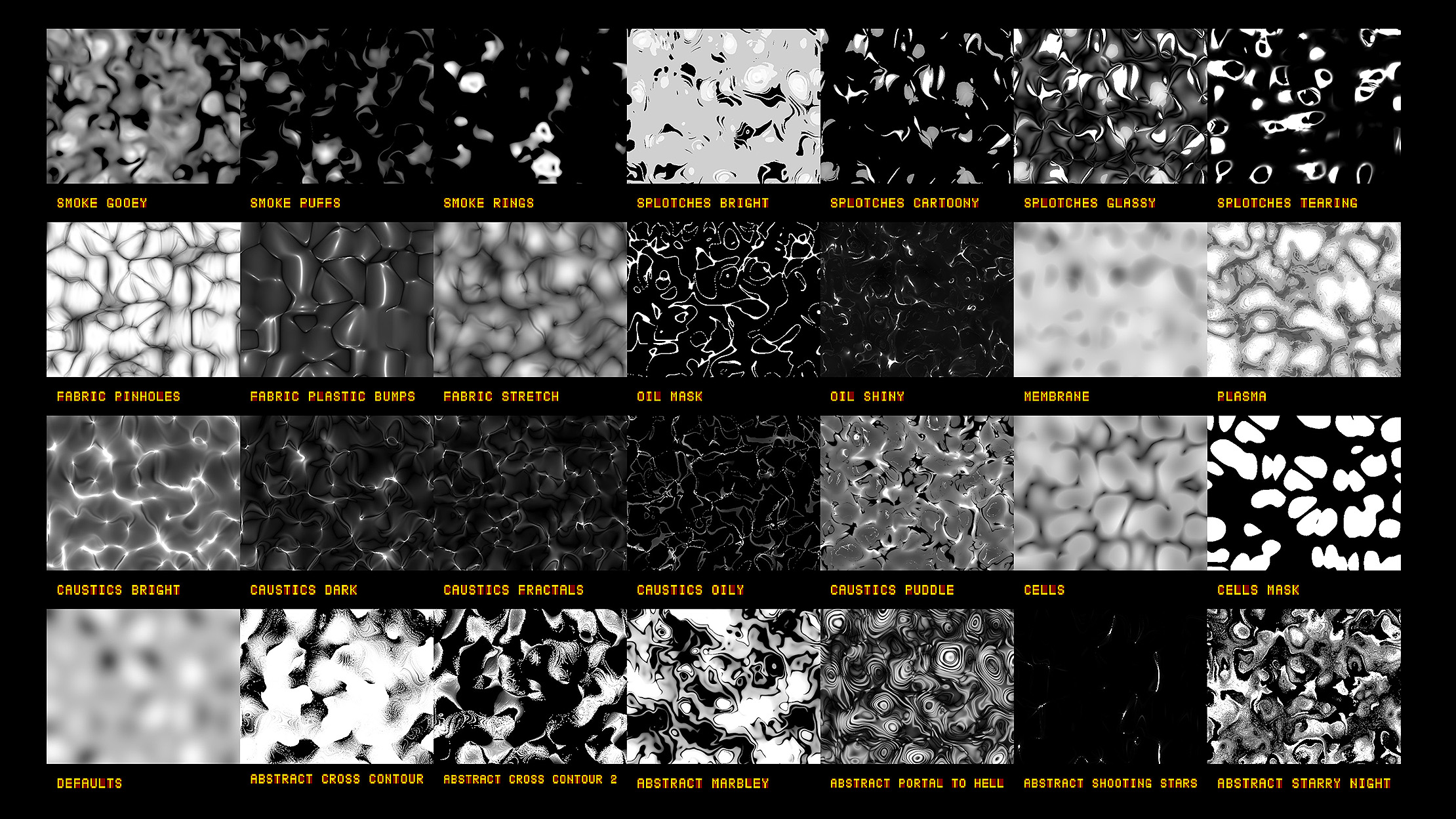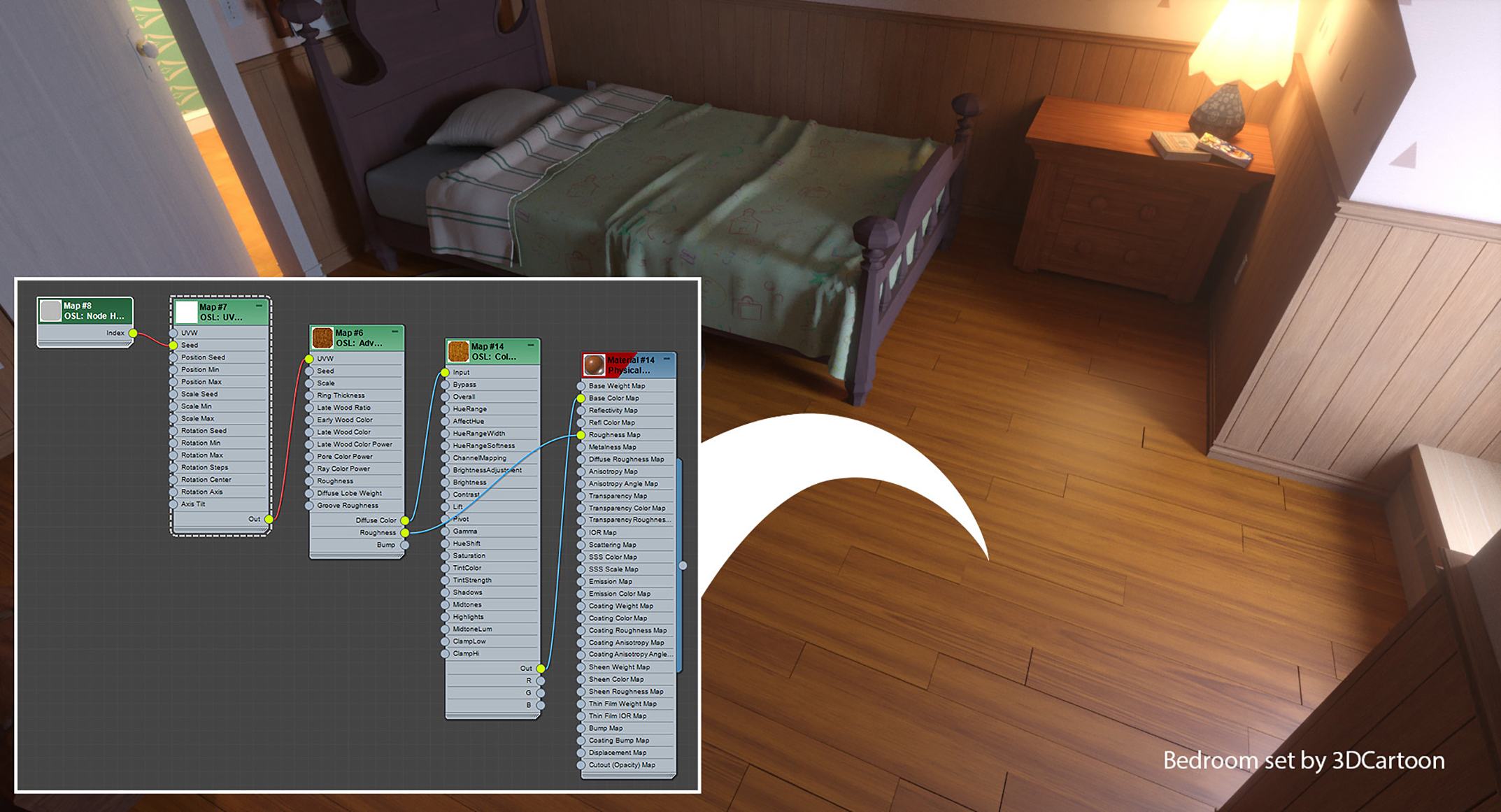Improved Polygon to Triangle mesh conversion
Artists and animators will notice an improvement in 3ds Max 2023.3 when dealing with polygon to triangle mesh conversions that can take place behind the scenes.
Modifiers that need to convert data from Polygon to Mesh (or vice versa) can see up to a 40% speed improvement, viewport performance can benefit up to 35%, and users can see a small boost in performance when their scene data is sent to an offline renderer such as Arnold.
Organic Noise

Organic Noise preset (image courtesy Changsoo Eun)
The new Organic Noise OSL map will allow you to create organic looking noise patterns by modulating and filtering OSL noises. The Organic Noise map ships with dozens of presets to quickly set up a variety of caustic, artistic and abstract noises. See Installed OSL Shaders (Maps).
UVW Randomizer 2D and UVW Randomizer 3D OSL

OSL 3D Randomizer
The 2D & 3D UVW Randomizer OSL maps use a set of UVW coordinates and applies a random Scale, Offset and Rotation to them. These can be driven by a seed for per-object randomness for each effect. See Installed OSL Shaders (Maps).
ATF Importer
3ds Max's Autodesk Translation Framework (ATF) importer now supports Catia V5-6R2022 and Alias 2023 models.
Substance 2.4.9
3ds Max 2023.3 ships with Substance 2.4.9, which now supports version 8 and 9 of the Corona Renderer.
Arnold for 3ds Max 5.4.3.10
3ds Max ships with MAXtoA 5.4.3.10 for Arnold 7.1.3.2 which introduces various bug fixes, including improvements to Physical Material and Volume Material workflows.
Updated Attachment Constraint Auto Key Behavior
Previously, when using Auto Key mode, keys for the Attachment Constraint were always set at the current and frame 0, ignoring what was set in the Auto Key [default frame] preference, and what the animator had set for their current active time range.
This issue has been addressed in Update 3 so that the initial keyframes that are created when Auto Key mode is active are created as expected.